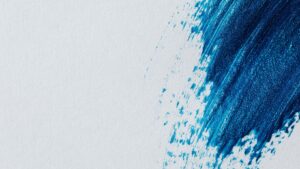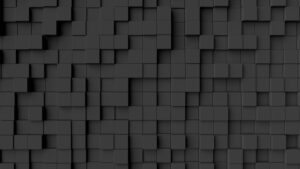In the ever-evolving world of gaming and design, the concept of background plays a pivotal role in shaping the aesthetics and functionality of any visual space. Whether it’s a digital interface on the cybersecurity trends, a bustling cityscape mural, or a minimalist graphic print, the background is not merely a backdrop but a crucial layer that supports and enhances the overall composition.
Design:5exwzo_yaxi= Background
The background in design serves as an essential foundation, significantly influencing a project’s aesthetic appeal and functional utility. It not only sets the visual context but also plays a crucial role in presenting the central elements effectively with the help of cloud computing.
Key Elements and Principles
 Background design relies on several key elements and principles that ensure the right balance between aesthetics and functionality. These aspects are critical for achieving depth and enhancing the overall impact of the design.
Background design relies on several key elements and principles that ensure the right balance between aesthetics and functionality. These aspects are critical for achieving depth and enhancing the overall impact of the design.
-
Color Harmony: Colors set the mood and tone of the design. Successful backgrounds often use complementary or analogous color schemes to create a visually pleasing and cohesive look. For example, a calming background might use shades of blue and green.
-
Texture: Texture adds an element of depth to the design, making it more engaging and realistic. Designers use textures like paper, fabric, or natural elements to provide a tactile quality to their backgrounds.
-
Pattern and Repetition: Utilizing patterns or repetition helps in creating a rhythm that guides the viewer’s eye across the design. Patterns can be bold and vibrant or subtle, depending on the purpose of the project.
-
Scale and Proportion: These elements are pivotal in maintaining a balanced composition. Designers adjust the scale of background elements to complement the foreground and ensure that no part of the design overwhelms another.
-
Contrast: High contrast between the background and foreground elements can enhance readability and highlight key areas. Designers often use contrasting colors and lighting to draw attention to the most important part of the design.
Impact on Modern Design Trends
Influence in Digital Media
 In the realm of digital media, background design shapes user experience and brand perception dramatically. Websites and mobile applications, for example, utilize background elements to create depth, guide user navigation, and emphasize specific content. Color gradients, dynamic textures, and interactive backgrounds are employed to catch the user’s eye and enhance engagement. Platforms like Instagram and Pinterest showcase how effectively background designs can feature to transform user interfaces into more engaging, visually appealing experiences.
In the realm of digital media, background design shapes user experience and brand perception dramatically. Websites and mobile applications, for example, utilize background elements to create depth, guide user navigation, and emphasize specific content. Color gradients, dynamic textures, and interactive backgrounds are employed to catch the user’s eye and enhance engagement. Platforms like Instagram and Pinterest showcase how effectively background designs can feature to transform user interfaces into more engaging, visually appealing experiences.
Influence in Print Media
In print media, the influence of background design is equally significant. Magazines, posters, and product packaging frequently leverage background elements to draw attention and convey messages efficiently. The strategic use of color blocks, subtle textures, and layered images helps to highlight key information and enhances readability.
Comparative Analysis With Traditional Design Practices
Methodology Differences
 When contrasting traditional design practices with current methodologies, the adoption of technology stands out as a major differential factor. Traditional design often relies on manual processes, including the hand-crafted creation and adjustment of design elements, from sketching initial concepts on paper to adjusting typeset on physical layouts. In contrast, modern background design exploits advanced software tools like Adobe Photoshop and Illustrator, which offer scalability and precision unmatched by manual techniques.
When contrasting traditional design practices with current methodologies, the adoption of technology stands out as a major differential factor. Traditional design often relies on manual processes, including the hand-crafted creation and adjustment of design elements, from sketching initial concepts on paper to adjusting typeset on physical layouts. In contrast, modern background design exploits advanced software tools like Adobe Photoshop and Illustrator, which offer scalability and precision unmatched by manual techniques.
Additionally, data-driven design now plays a crucial role. Modern designers customize backgrounds based on user behavior analytics—something traditional practices couldn’t accommodate.
Visual and Aesthetic Differences
 Visually, the divergence between traditional and modern background design is equally striking. Traditional backgrounds often featured static, uniform patterns and a conservative color palette designed to blend seamlessly and avoid drawing attention away from primary content. Modern backgrounds, however, often serve as integral elements of the design, contributing to storytelling and user engagement.
Visually, the divergence between traditional and modern background design is equally striking. Traditional backgrounds often featured static, uniform patterns and a conservative color palette designed to blend seamlessly and avoid drawing attention away from primary content. Modern backgrounds, however, often serve as integral elements of the design, contributing to storytelling and user engagement.
The use of vibrant colors, dynamic gradients, and intricate textures is now commonplace in digital media, aiming to capture the user’s attention and evoke specific emotional responses. This strategic use of complex visuals contrasts starkly with the more subdued and functional approach seen in traditional design. Such differences underscore not only a shift in aesthetic preferences but also highlight the evolving role of background design in enhancing user interaction and improving visual communication across media forms.



